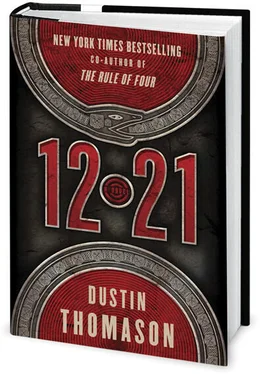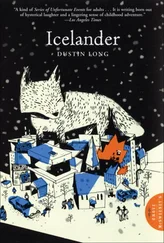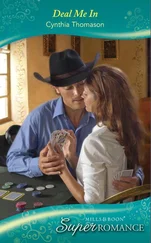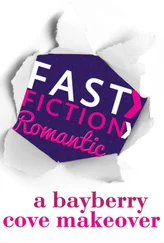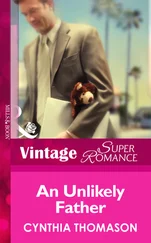“Which is how big an area?” Stanton asked.
“Several thousand square miles. But if the disease is already here, why does it matter where it started?”
“It’s like a cancer. Even if it’s metastasized, you remove the tumor at the original site so it doesn’t spread farther. We need to know what it is and how it started to have any chance of fighting it.”
“Something in the codex could tell us more,” she said. “We could find a glyph specific to a smaller area, or some geographic description. But we can’t know until the reconstruction is finished.”
“How long will that take?”
“The early pages are in poor condition, and the later ones are worse. Plus there are linguistic obstacles. Diffi cult glyphs and strange combinations—we’ve been doing everything we can to decipher them.”
“You better find a way to do it faster.”
Chel dropped onto a metal bench. It was dripping with dew or water from the sprinklers and she could feel it soaking through her pants, but she didn’t care. “I don’t understand,” she said. “Why do you trust me with the codex after I lied to you?”
“I don’t,” Stanton said. “But ICE called in a team of experts who told them the best shot at quickly figuring out where the book came from was you.”
* * *
LESS THAN AN HOUR LATER, Chel was on the 405, headed for Culver City. It was the last place she wanted to go after everything that had happened, but she no longer had a choice. For now there’d be no criminal investigation, and the most important artifact in Maya history would stay in her lab. Whatever hesitations she’d had about involving Victor Granning, all that mattered now was doing whatever she could to help the doctors. She couldn’t let her personal issues get in the way.
The Museum of Jurassic Technology on Venice Boulevard was one of the strangest institutions in L.A. Maybe in the world. Chel had been there once before, and after she’d oriented to the labyrinthine layout and its dark rooms, she was able to relax and let the museum work its wonders on her imagination. There were tiny sculptures that fit into the eye of a needle, a gallery of cosmonaut dogs sent into space by the Russians in the 1950s, an exhibit about cat’s cradles. Each one stranger than the last.
Just past the In-N-Out Burger on Venice Boulevard, Chel spotted the nondescript taupe building and pulled into a spot in front of the deceptively small storefront façade. The other time she’d come here, she was with her ex. Patrick had been obsessed with an exhibit on letters written to Mount Wilson Observatory about the existence of extraterrestrial life. He said the letters reminded him that there were ways to see the skies other than through the eyepiece of a telescope. As they read them together in the darkened space, Patrick’s voice never far from her ear, one letter drew Chel in too, The exact words the woman wrote about her experiences in another world had always stayed with Chel: I have seen all sorts of moons and stars and openings….
At the door to the MJT, Chel pressed a buzzer above a sign that read: RING ONLY ONCE. The door swung open and before her stood an auburn-haired man in his forties, wearing a black cardigan and rumpled khakis. Chel had met Andrew Fisher, the museum’s eccentric manager, when she came here the first time. Even the plastic shield he wore over his face couldn’t disguise the gentle intelligence in his eyes.
“Welcome back, Dr. Manu,” he said.
He remembered her?
“Thank you. I’m looking for Dr. Granning. Is he here?”
“Yes,” Fisher said as she stepped inside. “Chel, isn’t it? I’ve been working on some of Ebbinghaus’s memory techniques, which have proven useful. Let’s see. You work at the Getty, you’re too serious for your own good, and… you smoke too much.”
“Victor told you that?”
“He also told me you were the smartest woman he knows.”
“He doesn’t know many women.”
Fisher smiled. “He’s in back, working on his exhibit. Fascinating stuff.”
The MJT’s small, strange lobby smelled of turpentine and was lit with dark-red and black bulbs. The effect was disorienting after being in the bright light of day. There were bookshelves lining the walls, carrying obscure titles: Sonnabend’s Obliscence, magician Ricky Jay’s Journal of Anomalies , and a strange Renaissance volume entitled Hypnerotomachia Poliphili. The museum intentionally obscured the lines between fact and fiction. Part of the fun was trying to figure out which exhibits were real. Still, Chel was philosophically ambivalent about a place that inspired confusion and defied logic. Not to mention how uncomfortable she was with the exhibit her old mentor was putting up here.
Fisher led her down a maze of hallways, where a cacophony of animal sounds and human voices could be heard through scratchy speakers. Chel peered at the weird displays: Glass cases mounted on pedestals contained a diorama showing the life cycle of a stink ant. A tiny sculpture of Pope John Paul II stood in the eye of a needle, made visible by a huge magnifying glass.
Next they came around a corner and the maze opened up into a small room with a glass case containing some of the work of a seventeenth-century German scholar named Athanasius Kircher. Hanging from the ceiling in the center of the room was a bell wheel, which made an eerie chime as it turned. In the case were black-and-white drawings of subjects ranging from a sunflower with a cork stuck into the middle, to the Great Wall of China, to the Tower of Babel.
Fisher pointed at a sketch of Kircher. “He was the last of the great polymaths. He decoded Egyptian hieroglyphics. He invented the megaphone. He found worms in the blood of plague victims.” Fisher touched his plastic shield. “And these? Did you know he even suggested the public wear masks to protect themselves from disease?” He shook his head. “In our current obsession with overspecialization, everyone finds smaller and smaller niches, no one ever seeing beyond their own tiny corner of the intellectual spectrum. What a shame it is. How can true genius thrive when there’s so little opportunity for our minds to breathe?”
Chel said, “Sounds like a question only a genius could answer, Mr. Fisher.”
He smiled again, and ushered her down another warren of dark hallways. Finally they arrived at the back of the museum—a well-lit work area, where the exhibits were in varying stages of completion. Fisher led Chel through a narrow doorway, which led to the rearmost room in the building.
“You’re very popular today, Victor,” he said as they walked inside.
Chel was surprised to find that Victor wasn’t alone. He stood in the square work area with another man, who towered over him. The room was filled with hardware tools, panels of glass, unfinished pieces of shelving, and several wood display pedestals splayed out on the ground.
“Well,” Victor said, stepping around the mess on the floor, “if it isn’t my favorite indígena. Save her mother, of course.”
Chel studied her mentor as he walked toward her. He had once been very handsome, and even behind his eye shield she could see his brilliant blue eyes that hadn’t dimmed in seventy-five years. He wore a red short-sleeve polo buttoned to the top and tucked into a pair of slacks—the uniform he’d been sporting since his days at UCLA. His silver beard was neatly trimmed.
“Hi,” Chel said.
“Thank you, Andrew,” Victor said, glancing at the museum’s manager, who disappeared back into the hall without a word.
There was clear emotion on her mentor’s face when he returned his attention to Chel. She felt it too. She always would.
“Chel,” Victor said, “may I introduce Mr. Colton Shetter. Colton, this is Dr. Chel Manu, one of the world’s leading experts on the script, who, if I say so myself, learned everything she knows from me.”
Читать дальше
